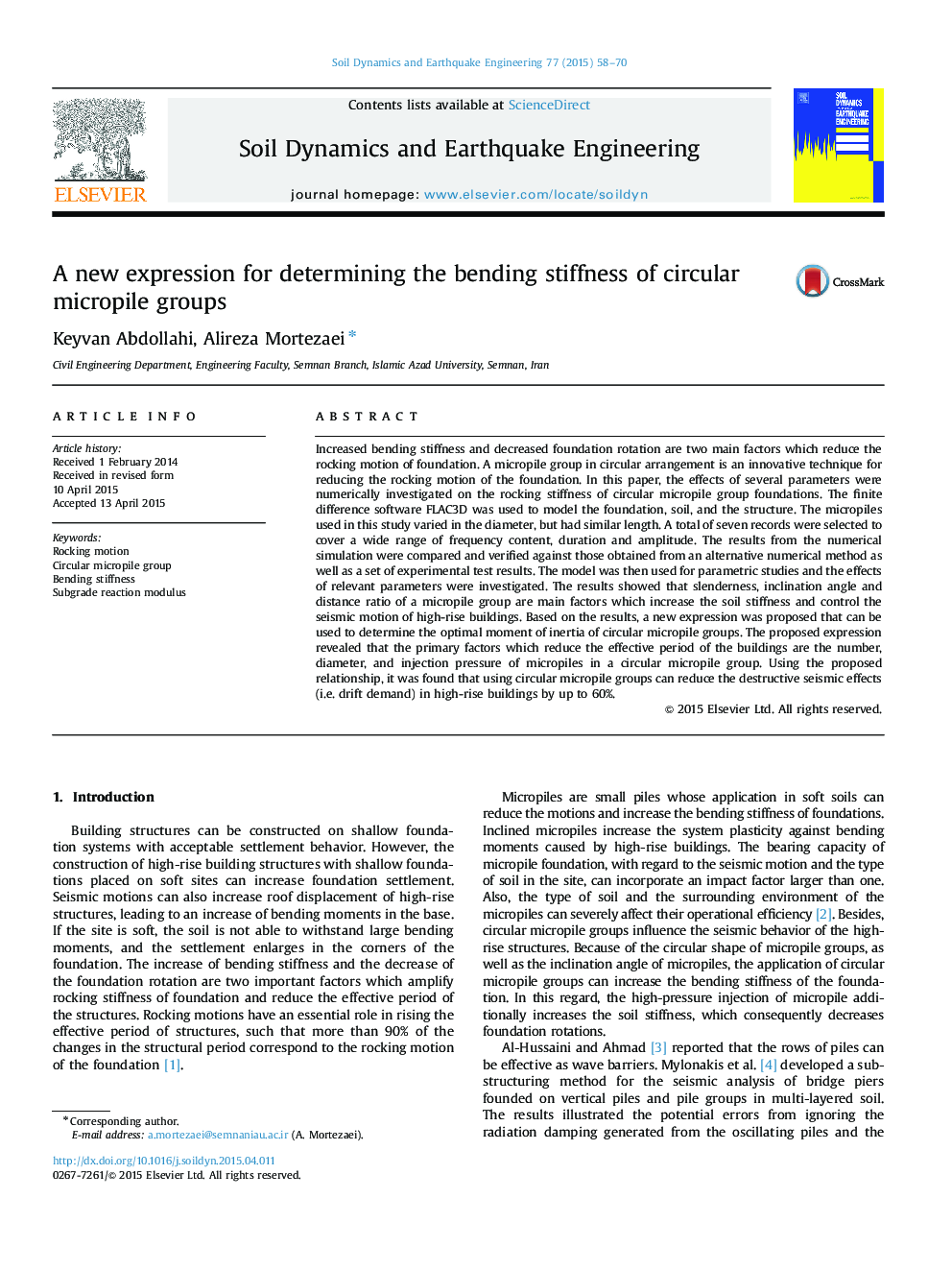| Article ID | Journal | Published Year | Pages | File Type |
|---|---|---|---|---|
| 6771822 | Soil Dynamics and Earthquake Engineering | 2015 | 13 Pages |
Abstract
Increased bending stiffness and decreased foundation rotation are two main factors which reduce the rocking motion of foundation. A micropile group in circular arrangement is an innovative technique for reducing the rocking motion of the foundation. In this paper, the effects of several parameters were numerically investigated on the rocking stiffness of circular micropile group foundations. The finite difference software FLAC3D was used to model the foundation, soil, and the structure. The micropiles used in this study varied in the diameter, but had similar length. A total of seven records were selected to cover a wide range of frequency content, duration and amplitude. The results from the numerical simulation were compared and verified against those obtained from an alternative numerical method as well as a set of experimental test results. The model was then used for parametric studies and the effects of relevant parameters were investigated. The results showed that slenderness, inclination angle and distance ratio of a micropile group are main factors which increase the soil stiffness and control the seismic motion of high-rise buildings. Based on the results, a new expression was proposed that can be used to determine the optimal moment of inertia of circular micropile groups. The proposed expression revealed that the primary factors which reduce the effective period of the buildings are the number, diameter, and injection pressure of micropiles in a circular micropile group. Using the proposed relationship, it was found that using circular micropile groups can reduce the destructive seismic effects (i.e. drift demand) in high-rise buildings by up to 60%.
Keywords
Related Topics
Physical Sciences and Engineering
Earth and Planetary Sciences
Geotechnical Engineering and Engineering Geology
Authors
Keyvan Abdollahi, Alireza Mortezaei,
